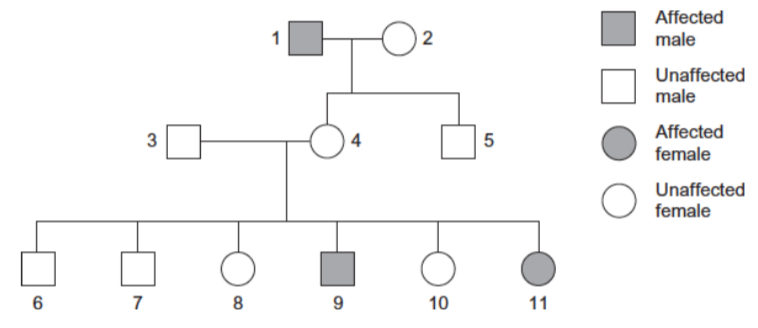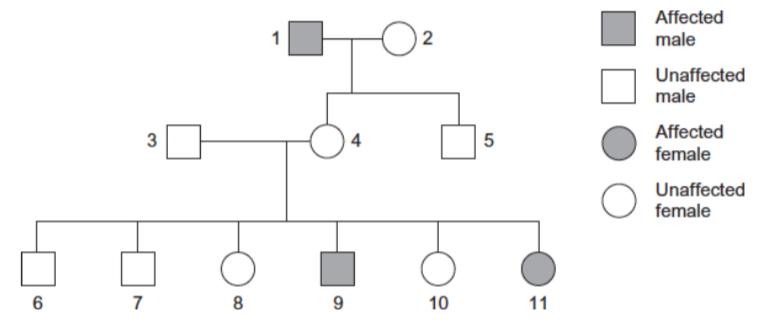Inheritance
1/24
There's no tags or description
Looks like no tags are added yet.
Name | Mastery | Learn | Test | Matching | Spaced |
|---|
No study sessions yet.
25 Terms
Genotype
The genetic makeup of an organism - all of its alleles
Phenotype
Physical appearance/observable characteristic of an organism
The expression of genetic constitution and its interaction with the environment
(expression/characteristic due to environment)
Dominant allele
An allele that is always expressed when it is present, you only need one copy
Recessive allele
An allele that can be masked by another allele and is only expressed when two copies are present
Homozygous
If an individual has two copies of the same allele of a gene
What is meant by codominant alleles? (1)
Both alleles are expressed equally in the phenotype, either being a blend of the two characteristics or both characteristics being seen together
Sex-linkage
A gene that is located on a sex chromosome, usually the X. The X chromosome is more likely to have genes located on it, as it is much larger than the Y chromosome
Genotypes of the different blood groups
Type A: IA IA or IA IO
Type B: IBIB or IBIO
Type AB: IAIB
Type O: IOIO
What is a universal acceptor and a universal donor?
Group AB individuals are described as ‘universal acceptors’, as they are able to accept blood transfusions from any blood type. This is because they have the antigens of both A and B, so the body will not recognise either of these antigens as foreign if introduced to the body, and no antibodies will be made against it in an immune response.
Blood group O has no antigens, so all blood groups are able to receive this, as no antibodies will be made against it. This is why O is referred to as a ‘universal donor’
Are males or females more likely to have a recessive sex-linked condition?
When a recessive gene is located on the X chromosome, it is much more likely that males will have this phenotype. This is because for a recessive phenotype to be shown in females, both X chromosomes must have to have the recessive allele, however in men there is only one X chromosome, so only one recessive gene is needed.
Haemophilia is a recessive condition represented by the letter h
What are all the genotypes of
- a woman with haemophilia
- a woman carrying haemophilia
- a healthy man
- a man with haemophilia
XhXh
XHXh
XHY
XhY
Dihybrid inheritance
The inheritance of 2 different characteristics, caused by 2 different genes (on different chromosomes)
[remember when drawing out the gametes of a dihybrid cross to include one of each letter within the gamete]
What is the expected phenotype ratio of a dihybrid cross with double heterozygous parents?
9:3:3:1 (Dom: Hetero: Hetero: Rec)
however this expected ratio may not be exactly shown in real life due to the random fertilisation of gametes, and a sample size that is potentially too small
What may have occurred if the observed ratio is very different to the expected ratio?
This is usually due to autosomal linkage, as 2 genes are located on the same chromosome
What is autosomal linkage?
2 genes that are located on the same chromosome (not the sex-chromosomes)
This means that alleles for each gene linked on the same chromosome will be inherited together as a single unit, as they do not undergo independent assortment (unless they are recombined in crossing over)
The closer two genes’ loci are to each other on the chromosome, the less likely they are to be separated during crossing over, and the fewer number of recombinants

Explain one piece of evidence from the diagram which proves that the allele for Tay-Sachs disease is recessive
Unaffected parents have affected children
(3 and 4 with offspring 9 and 11)Both 3 and 4 are carriers/heterozygous

Explain one piece of evidence from the diagram with proves that the recessive allele for Tay-Sachs disease is not on the X chromosome (2)
11 is affected, 3 is not (unaffected father/parents produce and affected daughter)
3/father of 11 does not have a recessive allele on his X chromosome (would pass on the dominant allele)
In genetic crosses, the observed phenotypic ratios obtained in the offspring are often not the same as the expected ratios.
Suggest two reasons why (2)
small sample size
fusion/fertilisation of gametes is random
linked genes (autosomal linkage/sex linkage)
epistasis
lethal genotypes
Epistasis
When the allele of one gene at one locus masks/affects the expression of a different gene at a different locus
What is the typical ratio for heterozygous AaBb x AaBb in a non-linked, general dihybrid?
9:3:3:1
What is the typical ratio of a heterozygous AaBb x AaBb, non-linked recessive epistasis?
9:3:4
(dominant = 13:3)
In fruit flies, the gene for eye colour is carried on the X chromosome. The allele for red eyes, R, is dominant to the allele for white eyes, r.
Male fruit flies are more likely than female fruit flies to have white eyes. Explain why (2)
Males only need to have one allele
Females need to have two recessive alleles
In fruit flies, a gene for a body colour has a dominant allele for a grey body, G, and a recessive allele for a black body, g
Explain how you would determine if the genotype of a grey fly is homozygous or heterozygous for body colour (2)
Cross with a homozygous recessive/black fly
If black offspring (and grey) are produced then grey fly is heterozygous
If no black offspring produced then fly is homozygous
In fruit flies, a gene for a body colour has a dominant allele for a grey body, G, and a recessive allele for a black body, g
A cross between a grey bodied male fly and a black bodied female fly produced some black bodied females. Explain how this shows that the gene for body colour is not sex linked (1)
If sex linked, females would receive the grey dominant allele
(or)
If sex linked, the male fly would only pass on the grey dominant allele, and would not pass on a black allele